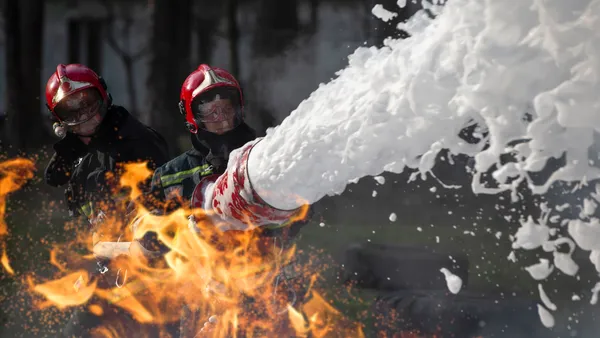Dive Brief:
- New York's Department of Environmental Conversation (DEC) has declared two closed upstate landfills potential Superfund sites due to high concentrations of perfluorooctanoic acid (PFOA), a potentially harmful chemical, as reported by the Times Union.
- According to the DEC, monitoring wells at a landfill in Hoosick Falls contained concentrations of up to 21,000 parts per trillion (ppt) and leachate at a site in Petersburgh/Berlin had concentrations of up to 4,200 ppt. The EPA says long-term exposure to concentrations over 70 ppt could be potentially harmful.
- DEC will investigate previous disposal practices at both sites and determine whether any illegal dumping happened. Depending on these results, and their potential threat to public health or the environment, the two landfills could be placed on New York's State Superfund Site Registry.
Dive Insight:
Both sites are thought to have accepted municipal and industrial waste until they closed in the early 1990s. Leachate from both of the sites also drains into nearby bodies of water. While the initial results may sound alarming, the DEC has said that the contamination appears to be contained and more information won't be known until it conducts further investigation.
PFOA has been an urgent issue for Hoosick Falls as local residents deal with water contamination potentially linked to former plastics manufacturer Saint-Gobain. Elevated levels of PFOA and perfluorooctane sulfonate (PFOS) have also been found at a nearby landfill in Shaftsbury, VT. A judge recently dismissed a suit filed by Saint-Gobain challenging Vermont's strict safety standards for PFOA.
In an unrelated incident, elevated levels of PFOA and PFOS were also found at a landfill in New Hampshire earlier this summer. These instances further show the need for safe landfill closure and the potential for mitigation expenses long after a site stops receiving material.















